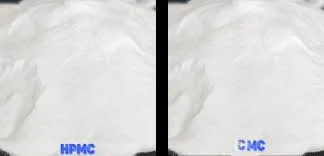
Dec . 09, 2024 14:53 Back to list
hpmc solubility in ethanol
Solubility of HPMC in Ethanol An Overview
Hydroxypropyl methylcellulose (HPMC) is a widely used polymer in pharmaceutical, food, and cosmetic industries due to its unique properties such as biocompatibility, thickening ability, and gelling properties. One of the crucial factors in utilizing HPMC in formulations is its solubility in various solvents, with ethanol being of particular interest. Ethanol is a commonly used solvent in the pharmaceutical industry, noted for its solvent properties and ability to influence the solubility of many compounds.
HPMC is synthesized through the reaction of cellulose with propylene oxide and methyl chloride, leading to a product that has been modified to enhance its solubility in various solvents. The solubility of HPMC in ethanol can vary significantly based on its molecular weight and the hydroxypropyl and methyl substitution levels. The solubility characteristics make HPMC advantageous for different applications, especially where a clear solution is required.
Factors Affecting Solubility
1. Molecular Weight The molecular weight of HPMC plays a pivotal role in determining its solubility in ethanol. Generally, lower molecular weight HPMC tends to be more soluble compared to higher molecular weight counterparts. This is due to the increased steric hindrance and viscosity that higher molecular weight polymers exhibit, which can impede effective solvation in solvent systems.
2. Hydroxypropyl and Methyl Substitution The degree of substitution (DS) of hydroxypropyl and methyl groups on the cellulose backbone also influences solubility. HPMC with higher hydroxypropyl content is more soluble in polar solvents such as ethanol since the hydroxypropyl groups enhance the interactions with the solvent molecules, thus facilitating dissolution.
3. Temperature Temperature is another critical factor affecting solubility. Increased temperature can improve the solubility of HPMC in ethanol by providing the necessary energy to break intermolecular attractions, enabling the polymer chains to disperse more freely.
4. Ethanol Concentration The purity and concentration of ethanol can also affect the solubility of HPMC. Higher concentrations of ethanol generally lead to increased solubility, but at some concentrations, the phenomenon of salting out can occur, where high solute concentrations cause reduced solubility.
hpmc solubility in ethanol

Applications
The solubility of HPMC in ethanol is leveraged in various pharmaceutical formulations, such as in the preparation of hydrophilic matrices for controlled drug release. The ability of HPMC to form gels in the presence of water allows it to be utilized in drug delivery systems where a gradual release of active ingredients is desired.
Additionally, in cosmetic formulations, HPMC’s solubility in ethanol can be beneficial in creating transparent gels or emulsions that serve as delivery systems for active ingredients. The thickening and stabilizing properties of HPMC also improve the texture and feel of personal care products.
Challenges and Considerations
While HPMC shows promising solubility in ethanol, there are challenges to be addressed. For instance, the potential for phase separation or precipitation upon mixing HPMC solutions with other ingredients in a formulation can lead to instability. Therefore, balancing the formulation components and optimizing procedures to ensure uniformity is essential for achieving desirable results.
Moreover, the environmental impact and safety profile of ethanol must be considered, especially in consumer products. Regulatory compliance and the health implications of using ethanol in formulations fashioned with HPMC should be meticulously evaluated.
Conclusion
In conclusion, the solubility of hydroxypropyl methylcellulose in ethanol is a multifaceted topic influenced by numerous factors such as molecular weight, degree of substitution, temperature, and ethanol concentration. Understanding these elements is crucial for effectively utilizing HPMC in various applications, particularly in pharmaceuticals and cosmetics. As research continues, further insights into optimizing the use of HPMC in ethanol can lead to innovative products that cater to the demands of various industries, enhancing both efficacy and consumer experience.
-
Versatile Hpmc Uses in Different Industries
NewsJun.19,2025
-
Redispersible Powder's Role in Enhancing Durability of Construction Products
NewsJun.19,2025
-
Hydroxyethyl Cellulose Applications Driving Green Industrial Processes
NewsJun.19,2025
-
Exploring Different Redispersible Polymer Powder
NewsJun.19,2025
-
Choosing the Right Mortar Bonding Agent
NewsJun.19,2025
-
Applications and Significance of China Hpmc in Modern Industries
NewsJun.19,2025







